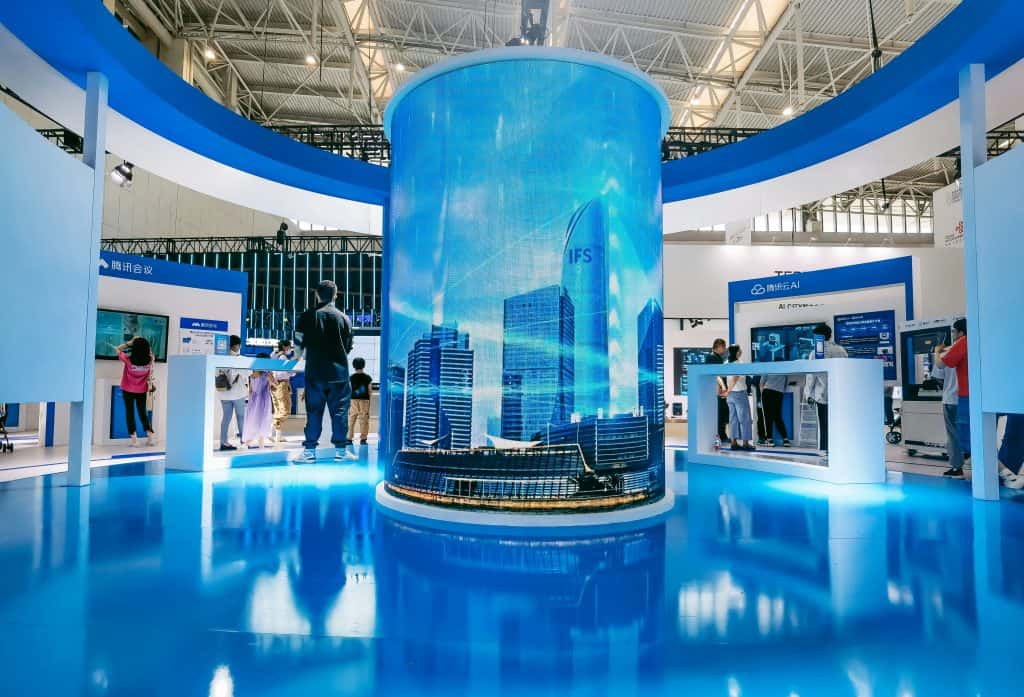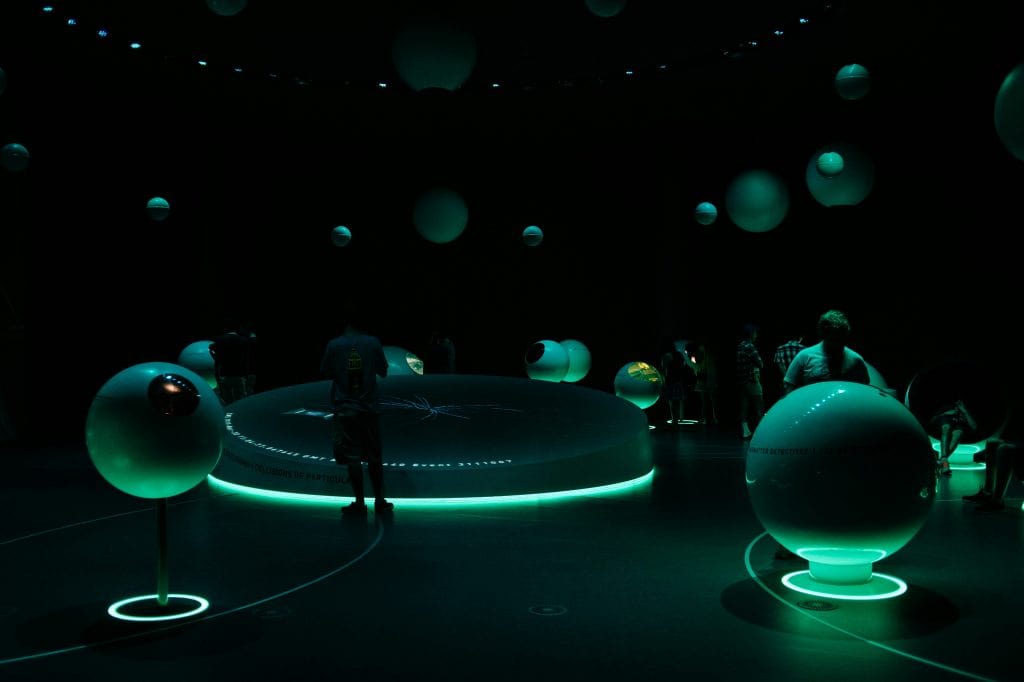
15 Feb Marketing Strategies for Virtual Art Exhibitions
The emergence of virtual art exhibitions marks a transformative shift, offering artists and art enthusiasts unprecedented opportunities for global connectivity and engagement. These digital platforms serve as innovative mediums through which creators can showcase their work to audiences spanning continents, transcending the constraints of physical galleries and traditional exhibition spaces. In this comprehensive guide, we delve into the intricate realm of virtual art exhibitions, dissecting three generations of marketing strategies meticulously crafted to navigate the ever-evolving digital landscape. From the initial stages of building awareness to fostering sustained post-exhibition engagement, we unravel the essential components integral to the success of virtual art exhibitions in an era defined by technological innovation and boundless creative expression. Join us as we embark on a journey through the realms of virtual artistry, where boundaries blur and artistic visions flourish in the digital sphere.
Pre-Exhibition Marketing Strategies

Photo by Windows
Building Awareness
Identifying your target audience is the foundational pillar upon which successful virtual art exhibitions are built. Understanding the demographics, preferences, and interests of your audience allows for the strategic allocation of resources and the creation of tailored content that resonates deeply. By leveraging preferred platforms for content dissemination, such as Instagram, Facebook, X formerly known as Twitter, and TikTok, exhibitors can craft compelling narratives that captivate audiences and stimulate engagement. Through the strategic deployment of high-quality visuals, captivating written content, and interactive elements like live streams and virtual tours, exhibitors can immerse audiences in a multisensory experience that transcends the boundaries of traditional exhibition spaces. Additionally, employing email marketing campaigns, issuing press releases to relevant media outlets, and forging strategic partnerships with influencers and industry stakeholders amplify reach and foster meaningful connections within the global art community.
Creating Anticipation
Generating anticipation and excitement in the lead-up to a virtual art exhibition is paramount to its success. Implementing countdown campaigns across social media platforms builds suspense and anticipation, encouraging audiences to mark their calendars and carve out time to engage with the exhibition. Contests and giveaways further incentivize participation, offering audiences the chance to win exclusive prizes or access special features within the exhibition. By offering exclusive sneak peeks and behind-the-scenes content, exhibitors cultivate a sense of exclusivity and intrigue, driving interest and excitement among potential attendees. Collaborating with complementary brands and influencers for cross-promotional initiatives extends the exhibition’s reach and introduces it to new audiences. Furthermore, organizing social media challenges that encourage user-generated content related to the exhibition theme fosters community engagement and empowers audiences to become active participants in the exhibition experience, establishing a sense of ownership and camaraderie within the virtual art community.
During the Exhibition

Photo by wu yi
Driving Engagement
Introducing interactive features is a cornerstone strategy for enhancing engagement within virtual art exhibitions. Incorporating elements like virtual scavenger hunts and quizzes adds an interactive layer to the viewing experience, encouraging participants to explore artworks more deeply and fostering a sense of discovery and excitement. Live events such as Q&A sessions with artists, interactive workshops, and live performances create opportunities for real-time interaction and dialogue between creators and audiences, enriching the overall exhibition experience. By actively engaging with attendees on social media platforms, exhibitors can cultivate a sense of community and connection, responding to comments, questions, and feedback in real-time, and fostering meaningful interactions that extend beyond the confines of the virtual gallery space. Hosting contests and challenges related to exhibition themes or artworks further incentivizes participation and encourages audience members to become active participants in the exhibition narrative. Additionally, providing educational resources such as artist interviews, behind-the-scenes videos, and curated playlists enhances the viewer experience, offering valuable insights and context that deepen appreciation for the artworks on display.
Promoting Sales
For virtual exhibitions offering sales opportunities, establishing a user-friendly e-commerce platform is essential to facilitate seamless transactions and streamline the purchasing process for prospective buyers. By integrating secure payment gateways and intuitive navigation features, exhibitors create a frictionless shopping experience that encourages conversions and enhances customer satisfaction. Leveraging targeted advertising campaigns tailored to specific audience segments amplifies visibility and drives traffic to the e-commerce platform, maximizing sales potential and expanding the reach of the exhibition to a wider audience. Offering special promotions, discounts, and limited time offers incentivizes purchase behavior, encouraging attendees to take advantage of exclusive deals and invest in artworks they connect with emotionally. Collaborating with online art marketplaces or galleries provides additional avenues for exposure and sales, tapping into established networks and leveraging existing customer bases to drive sales and foster partnerships within the broader art ecosystem. By employing a multifaceted approach that combines user-friendly technology, targeted marketing strategies, and strategic partnerships, exhibitors can optimize sales opportunities and maximize the impact of virtual art exhibitions in the digital marketplace.
Post-Exhibition Strategies

Photo by Elimende Inagella
Recap and highlight the success of the exhibition through testimonials and user-generated content serve as pivotal strategies for solidifying the impact of the virtual art event. Testimonials from attendees, artists, and industry professionals offer authentic insights into the exhibition experience, validating its significance and reinforcing its value within the artistic community. By showcasing positive feedback and personal anecdotes, exhibitors can underscore the exhibition’s success and celebrate its achievements, fostering a sense of pride and accomplishment among participants. Additionally, leveraging user-generated content such as photos, videos, and written reflections amplifies the exhibition’s reach and authenticity, providing a diverse array of perspectives and experiences that resonate with audiences worldwide.
Providing lasting value is essential for cultivating sustained engagement and fostering long-term relationships with attendees. Offering on-demand event recordings allows individuals to revisit their favorite moments and explore artworks at their own pace, extending the lifespan of the exhibition beyond its initial run. Educational materials such as artist interviews, curator insights, and thematic essays enrich the viewer experience, providing context and depth that enhance appreciation for the artworks on display. Digital souvenirs such as exclusive wallpapers, virtual postcards, and interactive catalogs serve as tangible reminders of the exhibition experience, allowing participants to carry a piece of the event with them long after its conclusion.
Building a community through continued engagement via email lists and social media groups is instrumental in nurturing connections and fostering dialogue among participants. By maintaining an active presence on social media platforms and facilitating discussions around exhibition themes, artists, and artworks, exhibitors can cultivate a vibrant community of art enthusiasts and practitioners who share a passion for creativity and innovation. Email newsletters provide a direct channel for communication and updates, keeping subscribers informed about upcoming events, exhibitions, and opportunities for involvement. By fostering a sense of belonging and camaraderie within the community, exhibitors can cultivate loyalty and advocacy among participants, driving sustained engagement and participation in future initiatives.
Conducting thorough data analysis to refine future strategies is essential for optimizing the effectiveness of virtual art exhibitions and maximizing their impact. By tracking key metrics such as website traffic, engagement rates, and conversion rates, exhibitors can gain valuable insights into audience behavior and preferences, identifying areas for improvement and refinement. Analyzing demographic data and audience feedback helps exhibitors better understand their target audience and tailor their marketing efforts and content offerings to meet their evolving needs and interests. By leveraging data-driven insights, exhibitors can refine their strategies, optimize resource allocation, and enhance the overall effectiveness and success of future virtual art exhibitions.

Photo by Kelly Sikkema
Conclusion
The success of virtual art exhibitions hinges on comprehensive marketing strategies that span pre-exhibition anticipation, during-exhibition engagement, and post-exhibition follow-up. By implementing targeted approaches across various digital platforms, organizers can effectively navigate the challenges of digital noise and capture the attention of their intended audience. During the pre-exhibition phase, building awareness through strategic partnerships, captivating visuals, and interactive content is paramount. Generating anticipation with countdown campaigns, contests, and exclusive access can fuel excitement and ensure a strong turnout for the virtual event.
Throughout the exhibition period, driving engagement remains key. Incorporating interactive features like virtual scavenger hunts, live events, and social media challenges enhances the viewer experience and encourages active participation. Moreover, promoting sales through user-friendly e-commerce platforms and targeted advertising can capitalize on audience interest and support artists. Post-exhibition, maintaining momentum is critical. By recapping the exhibition’s success, providing valuable on-demand content, and fostering community engagement, organizers can sustain interest and cultivate lasting relationships with attendees. Data analysis plays a pivotal role in refining future strategies, ensuring continuous improvement and adaptability in an ever-evolving digital landscape.
In essence, effective marketing strategies for virtual art exhibitions not only amplify visibility and engagement but also nurture meaningful connections between artists, enthusiasts, and the global art community. As the virtual art world continues to evolve, embracing innovative approaches and leveraging digital platforms will be instrumental in shaping its future success.
Key Takeaways
Key Area | Strategies |
Pre-Exhibition | Identify the target audience, use visuals and interactive content, leverage social media, email marketing, press releases, and partnerships. |
During Exhibition | Drive engagement with interactive features, live events, social media interactions, contests, and educational resources. Promote sales with e-commerce platforms, targeted ads, special offers, and partnerships. |
Post-Exhibition | Recap and highlight, offer lasting value, build community, and analyze data for future improvements. |
FAQs
How can I target the right audience for my virtual art exhibition?
To target the right audience for your virtual art exhibition, it’s crucial to first identify your ideal audience demographics and preferences. Understanding their preferred platforms, whether it’s Instagram, TikTok, or specialized art forums, will guide your promotional efforts. Tailor your content to resonate with these audiences, considering their tastes and interests. Utilizing social media analytics and insights will help you refine your targeting, allowing you to reach those most likely to engage with your exhibition.
What are effective ways to drive engagement during a virtual art exhibition?
Driving engagement during a virtual art exhibition requires a multifaceted approach. Incorporating interactive features within your exhibition platform can enhance visitor experience, encouraging exploration and participation. Hosting live events such as artist talks, virtual tours, or Q&A sessions adds a dynamic element that keeps attendees engaged. Actively engaging with your audience on social media platforms, responding to comments, and encouraging discussions around the artworks can foster a sense of community. Additionally, providing educational resources about the artists or techniques featured in the exhibition can deepen engagement by offering valuable insights.
How can I promote sales during a virtual art exhibition?
Promoting sales during a virtual art exhibition demands strategic initiatives. Setting up a user-friendly e-commerce platform directly linked to your exhibition enables seamless purchasing experiences for visitors. Utilizing targeted ads across social media platforms can reach potential buyers who have shown interest in similar artwork or themes. Offering special deals or discounts exclusive to exhibition attendees can incentivize purchases. Collaborating with online art marketplaces or galleries can extend your reach to a wider audience and leverage existing customer bases.
What should I focus on after the virtual art exhibition concludes?
After the virtual art exhibition concludes, it’s essential to maintain momentum and capitalize on the engagement generated. Recapping and highlighting key moments from the exhibition through social media posts, newsletters, or blog articles keeps the experience fresh in attendees’ minds. Providing lasting value through on-demand content such as recorded artist interviews, behind-the-scenes footage, or virtual walkthroughs allows those who missed the exhibition to engage at their convenience. Building a community around your art by fostering ongoing conversations, hosting follow-up events, or creating online forums encourages continued engagement and loyalty. Analyzing data gathered during the exhibition, including visitor demographics, engagement metrics, and sales performance, provides valuable insights to refine future strategies and improve the success of subsequent virtual exhibitions.
With this “Designing and Layout of Art Exhibitions” guide, you can maximize visitor engagement in physical art venues and make sure that everyone who enters has an immersive and fascinating experience.

